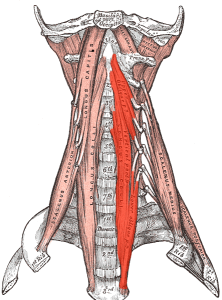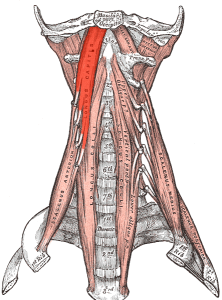
The longus colli and longus capitis muscles are found in front of the spine in the neck.
They are deep muscles that flatten the cervical curve of the spine and extend the neck when both sides contract. When only one side contracts, they flex, side bend, and rotate the head.
These muscles have two key functions that can be greatly affected when injured.
A great deal of the neck’s mobility is facilitated by the longus capitis muscle allowing the neck to twist and flex, and both of these muscles help to stabilize the cervical spine.

Over the past year or so I have made numerous mentions of a neck issue I have been dealing with since a car mishap two winters ago. It was a strange incident—sitting (and sleeping) in the passenger seat the driver hit a massive pothole and I bounced up and hit the ceiling of the car with my head.
“That’s not good,” was my immediate thought response.
All this time later I have been proven correct.
Every month or so I am back in the chiropractor’s office to get readjusted in search of relief from building tension developing on the right side of my neck.
Trying to figure out my neck problems led to the longus colli and longus capitis.
These muscles are considered “whiplash” muscles because, along with the sternocleidomastoid muscles, they are the most commonly injured muscles in rear-end car accidents.
In my case, I think I avoided injuring the longus colli and capitis and restricted my injury to the sternocleidomastoid. This is because the odd nature of the “accident” sent me up not forward.
Injury to, and dysfunction, of the longus colli and longus capitis can lead to a flattening of the curve of the neck as well as a lack of stability in the cervical spine.
***
